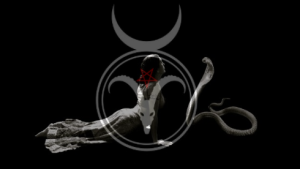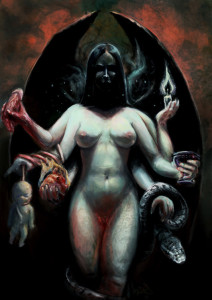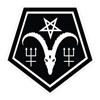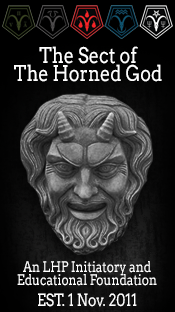The Serpent, Lilith and the Kundalini
by Thomas LeRoy
“The daimon of sexuality approaches our soul as a serpent.” — Carl Jung
Serpents play a role in much of the world’s mythological traditions. They can be found on both the left and the right-hand paths, representing life, death, sex, creation and destruction. They symbolize the need for transformation, the chthonic, the female aspect in the unconscious, and also wisdom.
“More especially the threat to one’s inmost self from dragons and serpents points to the danger of the newly acquired consciousness being swallowed up again by the instinctive psyche, the unconscious. The lower vertebrates have from earliest times been favourite symbols of the collective psychic substratum, which is localized anatomically in the subcortical centres, the cerebellum and the spinal cord. These organs constitute the snake. Snake-dreams usually occur, therefore, when the conscious mind is deviating from its instinctual basis.” — Carl Jung, “Archetypes of the Collective Unconscious”, page 166.
Lilith, ancient goddess of the left-hand path, is synonymous with sexual desire and the serpent that suggested Eve eat from the Forbidden Tree. She is a representation of the Great Goddess, a fusion of the carnal with the spiritual. To the ancient Hebrews, though, Lilith was a threat to their patriarchal system and thus they transformed her into a demon. This brought about a division between the male/female duality in the Self, and a suppression of sexual energies, which is still prevalent in all three Abrahamic mythological traditions. But is there a way to return Lilith to her deified status?
In the realm of comparative mythology Lilith is synonymous with the Kundalini, or Shakti, the divine female energy and consort of Shiva. Kundalini is the serpent, coiled at the base of the spine, just as the Serpent was coiled round the Tree of the Knowledge of Sex and Death. She is the first chakra, the root chakra, and is situated at the base of the spine. She is represented by the red Maladhara mandala (root support), the element of fire. The first chakra is the foundation of the physical body; she keeps us grounded. This chakra is the base of the six other Chakras. In some forms of yoga one meditates to awaken the Kundalini so that it will rise up through his/her body. The energy travels upward on a symbolic pathway parallel to the spinal column. As it rises the kundalini activates the chakras in succession. The objective is to raise the Kundalini to the crown chakra, where it unites with Shiva, the male polarity, the Horned God and all his manifestations.
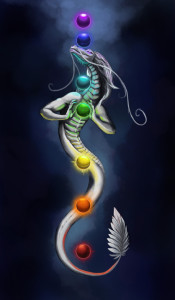
People have had Kundalini-like dreams and visions of serpents throughout all cultures. In terms of Jungian psychology, snake dreams have a powerful archetypal quality. Jung once related the story of a 28-year-old female patient who told him that she had a black serpent in her belly, and that the snake, which had been dormant, had suddenly become “active”. “One day she came and said that the serpent in her belly had moved; it had turned around. Then the serpent moved slowly upward, coming finally out of her mouth, and she saw that the head was golden.” When the woman first told Jung about the snake, he wondered whether she was crazy, but over time he realized that she was simply highly intuitive. She had intuited a typical, or archetypal, image. “Well now, that is a collective symbol,” he said. “That is not an individual fantasy, it is a collective fantasy.” The image of the snake in the abdomen is, of couse, well known in India. Jung said, “The serpent is at the basis of a whole philosophical system, of Tantrism; it is Kundalini, the Kundalini serpent.” Although the woman knew nothing about Kundalini and the tradition was pretty much unknown in the West at the time, Jung said that “We have it too, for we are all similarly human.”
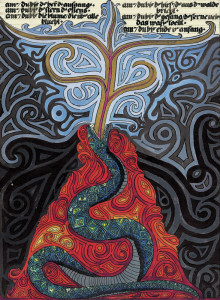
“You see, the Kundalini in psychological terms is that which makes you go on the greatest adventures. …It is the quest that makes life livable, and this is Kundalini; this is the divine urge.” — Carl Jung
Jung believed, though, that arousing the Kundalini had to be spontaneous, and not produced through the dangerous practices of Tantrism. He was not a fan of the left-hand path sexual cults (Too bad!) and never performed any type of formal meditation. But he did see meaning in the motion of the unconscious through Kundalini awakening. The Serpent aspect is not eliminated, or repressed, as it is on the right-hand path. This is one with the alchemical process of transmutation of the base self into something precious. You, your ego, is being elevated to a deified status (self-deification). It is the demon (Lilith) once more becoming the Goddess.
